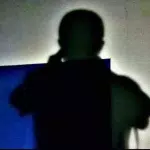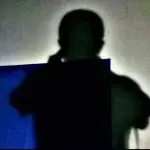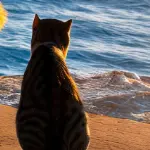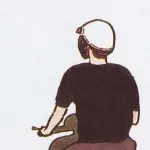Argentinians must be one of Earth's nations that rely the most on hot water. In their bags there must be a thermos filled with it, and fiddlier than the Chinese, there should also be a delicate tea cup and a metal straw that would be shared with anyone. It’s all for sipping on yerba mate anytime, anywhere. As I traversed the entire country from north to south, visiting the white-collar offices in Buenos Aires, cycling in the Lake District and even on the cruise to the 'end of the world,' I could always see them pouring a few drops of boiling water to moisten the magical tea, passing it around for everyone to savor. Now I’m sure Mate, rather than blood, runs in the veins of Argentinians.

Along the entire way from Ushuaia through the Beagle Channel, I was simply immersing in this scent that I couldn’t be more familiar with. Although Ushuaia proudly displays signs proclaiming 'Fin del Mundo' (End of the World) all over the streets, the true southernmost town on Earth is, Puerto Williams in Chile, just across the strait. However, though the waters before me ripples turquoise, it was deep winter in 2016, and to head further south to Antarctica, I should have had book reservation for a sky-high expensive icebreaker much earlier in advance. Thus, I had no other alternatives but stay in this 'End of the World' where the water had not yet frozen,with a new friend I just met on the road.

Sailing past rocks occupied by colonies of sea lions and the waters where Magellanic penguins dove and chased shy whales, the yacht approached a lighthouse. This scene mirrors a moment in Hong Kong director Wong Kar-wai's film "Happy Together," where a young Taiwanese chef, a supporting character, heads to the lighthouse accompanied by the voice of Tony Leung in a cassette tape, seeking to release his sorrow.

In a Chinese restaurant in Buenos Aires, the two had a conversation:
"Where are you going next?"
"A place called Ushuaia."
"Cold place. Why are you going?"
"They say it's the end of the world. I’d like to see it. Have you ever been there?"
"Heard there's a lighthouse there. Heartbroken people go there and leave their unhappiness behind."

The young chef finally arrived at the end of the world and spoke to himself:
"In January 1997, I finally reached the end of the world. Here is the southernmost lighthouse in South America, beyond which is Antarctica. Suddenly, I really wanted to go home. Although I was far from them, at that moment, it felt very close."

Facing the same lighthouse, unlike the romantic characters in the movies, I wasn't ready to go home. Instead, I embarked on a journey of scientific exploration.
The red-white-red color sequence of the lights signifies danger if sailing west, while the reverse, white-red-white, appears in pairs in the distance, indicating danger when heading east. The central part of the Beagle Channel is particularly shallow, making it unsafe for vessels exceeding a certain size to navigate. Therefore, to enter the Pacific, large ships departing from Ushuaia must first sail eastward along the northern coast on the Argentine side, bypassing this lighthouse, then turn west and sail along the southern coast of Chile.

In the straits of Ushuaia, there are some uninhabited islands. The indigenous people, the Yamana, once existed in the Tierra del Fuego region for 5000 years. Before the arrival of colonizers, these islands lacked clothing, and the Yamana lived naked, surviving harsh winters by smearing themselves with sea lion fats. They generally lived to around 60 years old. On some leeward islands in the straits, animal’s bodies and bones were washed ashore, becoming favored places for the indigenous people to obtain food without labor. Later, civilization arrived, and the Yamana people began wearing clothes, marking the loss of their cultural identity. Now, an 85-year-old woman remains the only one who can still speak the native language, living on the Chilean side of the coast. However, her descendants have long mixed with incoming ethnic groups, and the Yamana language, even the ethnicity, is destined to vanish forever.

Civilization was first introduced by missionaries and sea captains, including one world-traveling figure, Frizy Roy, who took four Yamana natives and exhibited them in London as part of a "civilization education experiment."

Subsequently, repeat offenders and political prisoners began cultivating the barren land of Tierra del Fuego, establishing the sizable city of Ushuaia.

The prison that once confined them has now become a maritime museum where artist Nahuel Mieres, through narrative murals, reconstructs the lifestyle before the arrival of photographic technology on the prison walls. Walking to the still unconverted cold cells on the other side, I suddenly realized that this was the opening scene of the Argentine film "The Journey," which had the most profound impact on me.

In the lens of the renowned director Fernando Solanas, the ruins of the prison transforms into a dilapidated school, where the campus constantly shakes and sways and portraits of celebrities frequently fall. Children hide in the washrooms, smoking, and writing poetry. The protagonist, Martin, about to graduate, strolls through the prison-like dim corridors of the school, muttering to himself and contemplating:
I’m going to be graduating and don’t know what to do. I’m keen on everything.
Am I perhaps afraid of failing? Will I procrastinate much longer?
Maybe anthropology, The Indians have always interested me. They lived here 4000 years ago. How did they manage?
They survived everything, except the invasion of the white man.
And if I studied history? To understand the past.
Papa says there’s not just one road. He went from geology to comics.

Martin then escapes from the school, carrying his father's comic book about Latin American geology. He hops on his bicycle, distancing himself from the confinements of education, the swaying islands, the auctioned national land, and the capital sinking into a flood. He traverses through the fragmented Latin America.

Perhaps it's a bit exaggerated, but to some extent, my wanderlust and passion for movies is connected to this film filled with visuals of magical realism.
Continuing south, a post office named "End of the World" stood proudly on the shores of the bay upon entering the Tierra del Fuego National Park. The roads were closed due to the season, but one could easily climb over the fence and reach it. The mailbox was open for slip postcards. However, the next pick-up by the mail carrier was scheduled for September.


On the way back to the city, rushing to catch the latest season of "Game of Thrones," the long-awaited heavy snow finally started falling. Winter is here.




























































Share your thoughts!
Be the first to start the conversation.